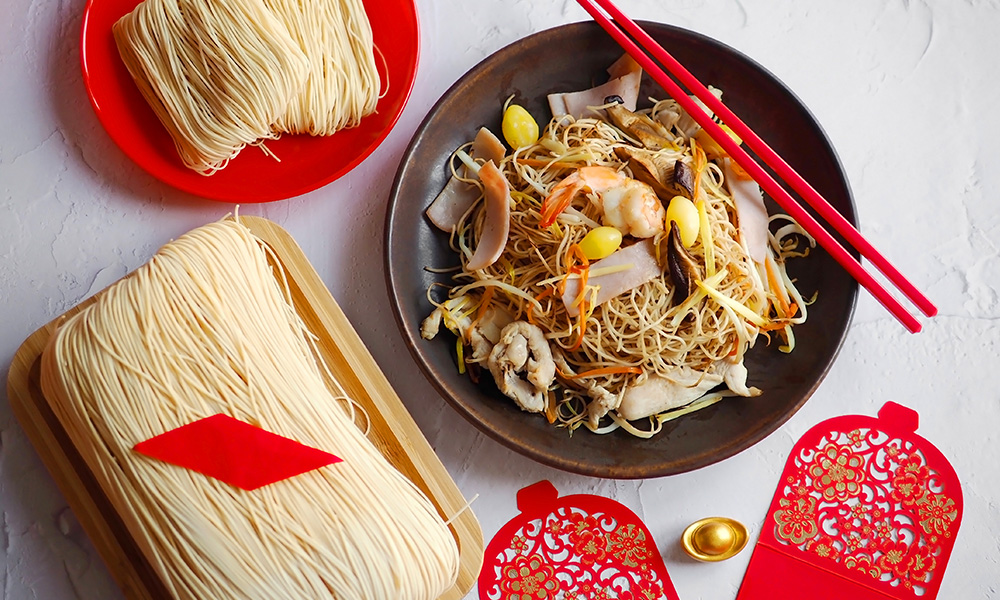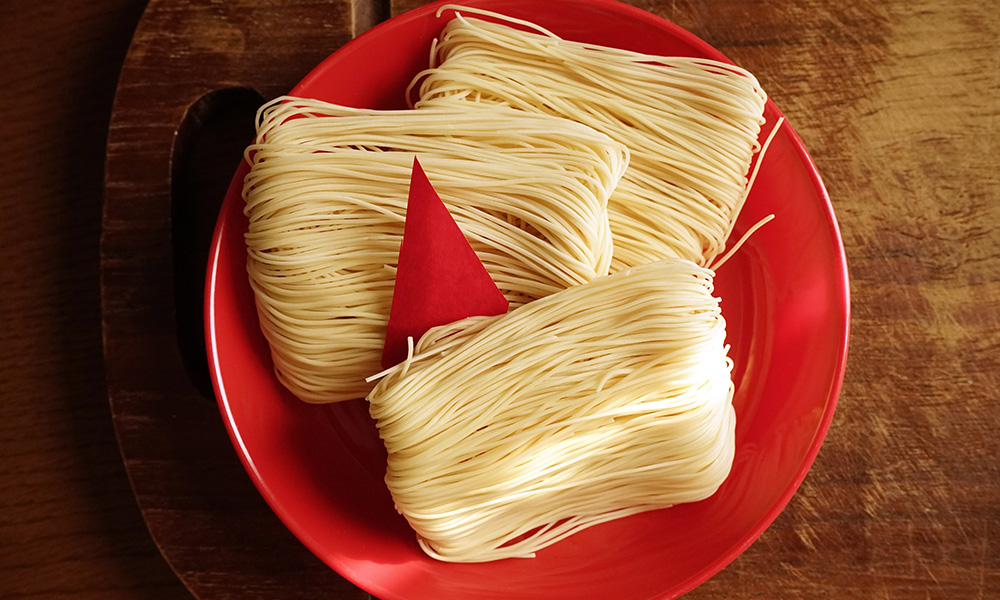Perk Up with 6 Tasteful Malaysian Drinks
Lighten your mood and rejuvenate your senses with 6 must-try Malaysian drinks!
Discover the authentic in Asian cuisine food
Around the World, Asian Pantry

Family feasts and communal banquets are a staple of Lunar New Year celebrations. Some may even feature up to 10 gastronomic dishes to share with everyone around the table, often ending with a large plate of Longevity Noodles.

Longevity Noodles or Changshou-Mien is actually a festive Chinese dish for almost every auspicious occasion. From birthday feasts and marriage banquets to promotion parties and business celebrations, the yummy noodles are often savoured to complete the shared meal.
Chinese Yi Mien is the most common noodle type used to cook Longevity Noodles. The golden-coloured strands are made with egg, wheat flour and bicarbonate soda. When cooked, the noodles exude an appetizing savoury taste with a tender springy texture, and can easily take on the flavours they’re cooked with.
Yi Mien usually comes pre-fried in crunchy dried disc-form, kept fresh in air-tight packs, available at Chinese and Asian grocers around the world. Chefs would boil the noodles to soften them before cooking. Apart from festive times, Yi Mien is also a popular everyday noodle for soupy, saucy and stir-fried dishes, enjoyed in homes, at diners, restaurants and hawkers.
For Lunar New Year Longevity Noodles, the Yi Mien must be cooked uncut to retain the long strands for the slurp. The noodles are stir-fried with shiitake mushrooms and lucky greens, plus a savoury sauce blend for a comforting umami taste.

Noodle culture among the Chinese is believed to have started during the ancient Han Dynasty, 141-87 BCE. Folklore has it that the 7th Emperor Han Wu was a superstitious man, who in his old age had longed for eternal life. To appease him, his ministers told the emperor that people with long faces have long lives as well. But the emperor’s favoured minister Dongfang Shuo joked instead: then their mystical ancestor Pengzhu, who lived 800 years, must have had an absurdly long face. To which, the entire court erupted with laughter.
Tale of the exchange reached the common folk, and because the Chinese words for ‘face’ and ‘noodle’ are homophones, the saying ‘long noodles, long life’ soon spread.
Longevity Noodles had been spotted in historical texts and cookbooks as well, dating back to at least 1000 years, so historians would usually balk at the legend above as the inspiration for the dish. Nonetheless, the meaning and popularity of Longevity Noodles had become an integral part of Chinese cuisine over the centuries. A must-have dish for Lunar New Year, even beyond Chinese culture. Vietnamese, Koreans, Malaysians and Singaporeans also make and enjoy Longevity Noodles for their annual festivities.

‘Long noodles, long life’, so Longevity Noodles are cooked in whole strands, served warm and fresh off the stove, and traditionally slurped long and chewed whole.
According to Chinese belief, to break the noodles as you eat may diminish the auspiciousness. Apart from longevity, the Lunar New Year dish also represents prosperity, good health, and hope for the coming days. So, complete your Lunar New Year celebration with Longevity Noodles. Whip it up with our easy authentic recipe!

Lighten your mood and rejuvenate your senses with 6 must-try Malaysian drinks!

Pair your hearty barbecues with these refreshing Asian delights!

What are the properties of ginger, and how to pick, store and use ginger in your cooking? Find out here!